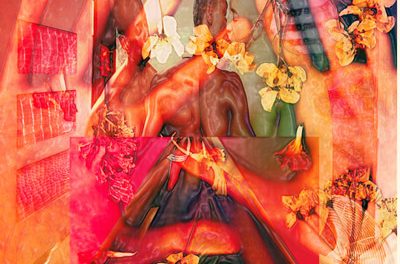
Film Review – FLOWERS OF WAR
Director: Zhang Yimou
Screenplay: Liu Heng and Yan Geling
Players: Christian Bale; Ni Ni
Genre: War drama
Rating ****½
\The Flowers of War is a moving yet uplifting drama about the beautiful savagery of war. Set in the autumn of 1937, the film tracks the fall of Nanking to invading Japanese troops. Caught in the crossfire between the local Chinese soldiers, ill-equipped and inexperienced in real warfare, and the Japanese, superior both in number and fire-power, is the Winchester Cathedral, a Roman Catholic edifice, impressively Gothic, which provides indifferent shelter to a huddle of females, a young Chinese caretaker-cleaner, and a dissipated American mortician, John Miller (Bale). In the courtyard outside the church is a huge red cross on a white sheet, spread out on the ground, as a plea for sanctity and safety from aerial attack. The action which takes place on the flag has tragic and ironic significance.
The plotline is based upon a novel by Yan Geling, who also contributed to the screenplay. The film opens to the utter devastation of bombing and killing, with Nanking in ruins around the stoical walls of the Cathedral. The official refuge is already full of dispossessed citizens, so a huddle of prostitutes from the local brothel bullies its way into the Cathedral, led by the intrepid Mo (Ni), who takes the lead in tossing her worldly possessions over the wall and scrambling in pursuit, followed by the rest of the girls in their finery, high heels, immaculate make-up and concrete perma-waves. They seem ironically out of place among the blackened shards of buildings, smoke, and flaming remnants – all that is left of Nanking.
The cinematography is an outstanding feature of many Chinese films such as HERO. The western choral music which highlights many of the dramatic moments of the film is tender and moving, contributing to the beauty that is revealed of the human condition. Under the horrifying destruction and violence, both nobility and the capacity for self-sacrifice come to the fore. In the beginning, Japanese soldiers ignore the sanctity of the religious refuge. A huge stained-glass rose window provides the backdrop for the savage violence which plays out in front of it. A group of convent students, a dozen or so young girls with severe page-cut hairstyles and demure mien, are terrified and terrorized, unused as they are to any worldly reality. One girl plunges to her death from the upper level of the church to escape the invaders, lying on the cold stone as the oozing blood tells her story without the need for a word of dialogue. Behind her, Miller, bludgeoned on the head, lies parallel on the church steps, bloodied and unconscious.
A single soldier, a Chinese survivor of the local troops, hides in the rubble, doing his best as a sniper, with his sights trained upon enemy action, His face is covered in mud and blood, so his appearance is intimidating enough, but his potential to protect his countrymen and women is limited. He tries.
The storyline really starts within the church: the convent girls are timid and unworldly, led by Shu, who is nominally the narrator of the story. She is fearless, leading them from room to room in a chaotic flock as they flee the lustful violence of the Japanese troops. She has a corresponding figurehead and role model in the person of Mo (Ni), the brave and cynical marshal of the brothel contingent. The prostitutes are huddled in a cellar under the floorboards before the Japanese soldiers arrive, thus depriving the innocent students of any meaningful refuge. Shu takes the brave decision to lead her flock away from the trapdoor entrance, thus saving the prostitutes from discovery while putting the convent girls at great risk. At this point, too, Miller the mortician, whose dissolute desire for alcohol and anything of value has deprived him of any heroic status, stands up to be counted by acting as a human shield for the convent girls.
An urbane Japanese commander, Major Li, vows to protect the church and the girls, posting his soldiers outside the wall to prevent both access and exit. He and other senior military officials fill a couple of pews to listen to the pure innocent voices of the convent choir: the beauty of their choral work lifts the soul to the blackened rafters above and the innocence of the unpainted faces contrasts sharply with those of the prostitutes still huddled and undiscovered in the cellar beneath them.“
Two prostitutes escape to return to the brothel: one to retrieve her jade jewellery, all that she possesses of value in this world, and the other to fetch the strings to her musical instrument, a prized possession so that she could play ‘Qin Huai View’ a traditional piece of music for prostitutes which ceremoniously celebrates their walking through a palace. Miller blusters his way out of the Cathedral to find the girls but fails to save them – or himself. A chance meeting with another westerner offers him the opportunity to escape by boat but he chooses to remain to protect both groups of girls under his unofficial charge, as he poses as Father John, wearing the religious robes of the previous incumbent.
Although this is a simple story, dealing with a few hours in the lives of the survivors in Nanking, it is a film of great power and strength. One group of girls is ultimately forced to leave the church, under the command of the Japanese commanders: they go with shards of church glass concealed under their robes and in the knowledge they walk to certain death.
Foreign films can be disconcerting because of sub-titles but much of the dialogue of this film is in English and what sub-titles there are fail to be obtrusive. There are very few good films at the moment which transcend action or ribald humour – but this is one of them. This is a classic masterpiece which marks a superior milestone in Chinese film-making at its best: all the necessary skills which fuse together in good cinema are in abundance here. Flowers of War is a must-see for this holiday.













































